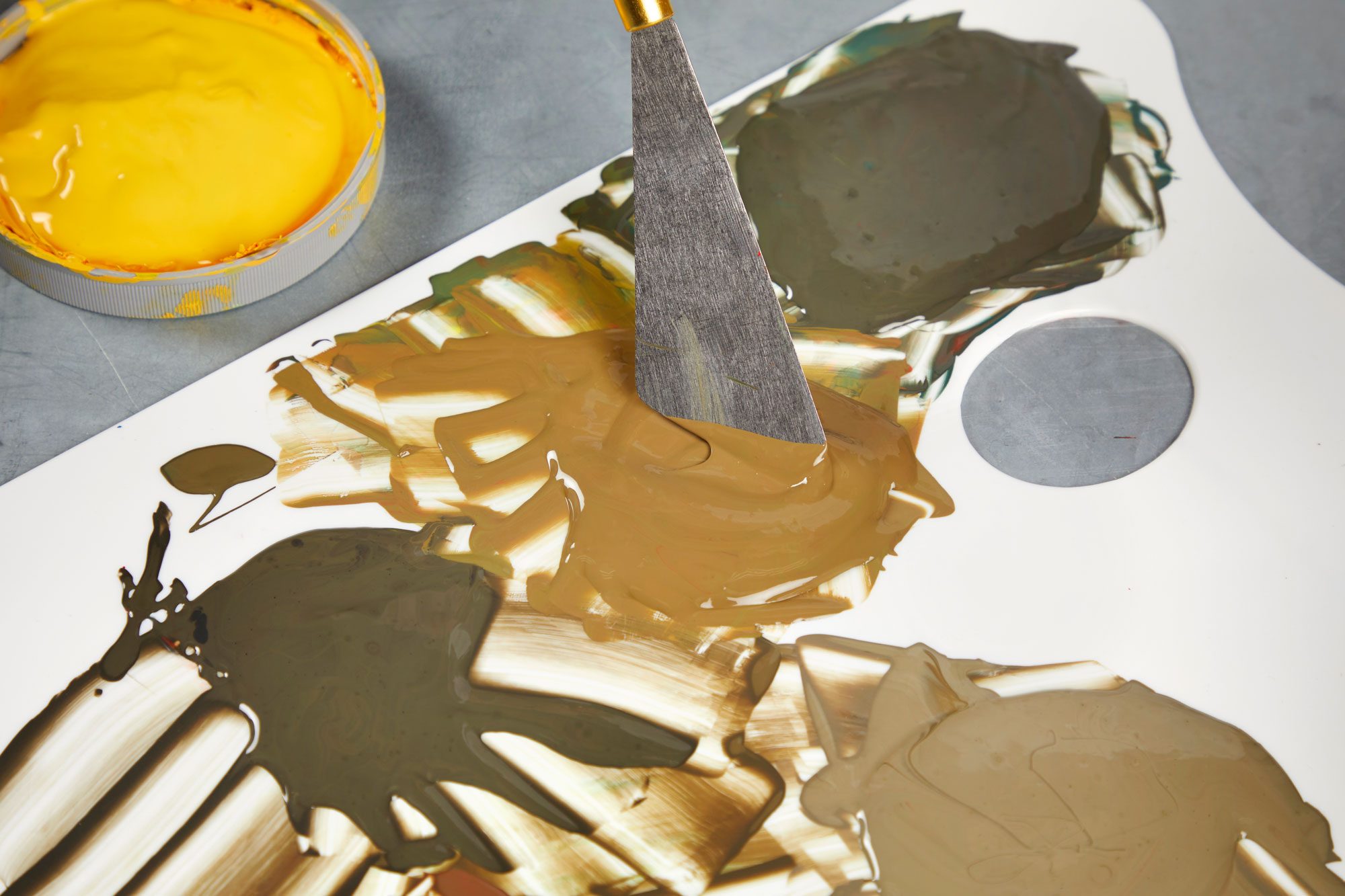What colors do you mix to make brown? We'll show you.
10-15 minutes
Beginner
$0 - $20
Introduction
From earthy tones to rich chocolates, this step-by-step guide explains how to make brown paint in any shade you desire
Tools Required
- Mixing board palette
- Painting/putty knife
Materials Required
- Plastic spoon
- Variety of paints
Project step-by-step (9)
In the middle of a painting project and just noticed you’ve run out of brown paint? No worries! If you’ve got some other colors, you can mix up your own!
You probably remember learning about the primary colors—red, yellow, and blue—in elementary school. From these foundational colors, you can create many additional colors by blending them together. If you have both primary and secondary color paints available, you can even mix them to create brown paint. Secondary colors are formed by combining two primary colors in equal parts, resulting in colors such as violet, orange, and green. This knowledge can be very useful if you run out of a specific color while working on a project and you don’t feel like running to the craft store.
When you’re mixing and blending colors, it helps to know some basic terms like hue, tint, tone, and shade. A hue is simply a pure color that hasn’t been changed at all. When you tint a color, you’re adding white to lighten it up. If you want to tone a color, you mix in some gray to make it look a bit more muted. And when you shade a color, you’re adding black to darken it. Knowing these terms can make your color mixing way easier!
Only mix paints if they are the same kind… acrylic with acrylic, oil with oil, etc. When mixing paint, keep in mind that a little goes a long way. You can always add more paint, so be careful not to use too much of one color, as it can overpower the mixture. Using a plastic palette mixing board is the easiest way to mix paints because clean-up is simple. If you don’t have one, you can also use the flat top of a plastic container or wax paper.
If painting is something you do frequently, I recommend purchasing a color wheel from a craft store or online for a few dollars. This simple tool eliminates the guesswork involved in mixing colors. It’s also very helpful for finding inspiration when choosing wall colors for your home, especially if you’re unsure which colors will complement each other.
Gather the red, yellow, blue, white and black paint
You will need the three primary paint colors: red, yellow, and blue. Set the black and white paint aside for now.

Apply equal amounts of paint
To use the color mixing board, pour out equal amounts of red, yellow, and blue paint with a plastic spoon. The total amount of paint you need will depend on your project, but ensure that the three colors are in equal proportions.

Mix paints
Using a painting knife, thoroughly mix the paints until the colors are completely blended. If you don’t have a painting knife, you can also use a putty knife or a paint brush.

Lighter shades of brown
Using a painting knife on your board, create a separate pile of paint from the original brown you made. Add a small amount of white paint and mix it to create a lighter shade of brown. If you want an even lighter shade, continue adding more white paint until you reach your desired color.

Darker shade of brown
Create another separate pile of paint from the original brown you made. Add a small amount of black paint and mix it to create a dark shade of brown.

Red shade of brown
Repeat the process of creating a separate pile of paint from the original brown you made. Add a small amount of red paint and mix it to create a red shade of brown.

Golden shade of brown
Repeat the process of creating a separate pile of paint from the original brown you made. Add a small amount of yellow paint and mix it to create a golden shade of brown.

Cool shade of dark brown
Repeat the process of creating a separate pile of paint from the original brown you made. Add a small amount of blue paint and mix it to create a cooler shade of dark brown.

Browns can also be made by mixing secondary colors
You can also make browns out of secondary colors, such as :
- Mixing violet and yellow
- Mixing red and green
- Mixing orange and blue
- Mixing orange and black

FAQ
How to lighten a color?
Add white, yellow, or another light color to your paint and mix it to lighten it.
What is the difference between acrylic paint and oil paint?
Acrylic paint is water-based, while oil paint is oil-based, which is why Acrylic paint dries faster than oil paint. This difference means that cleaning up after using each type of paint requires different methods. Acrylic paint can be easily cleaned up with soap and water, but oil-based paint requires mineral spirits to clean brushes and tools.
How long does acrylic paint last after opening?
If acrylic paint is stored properly, it can last up to 10 years.





















